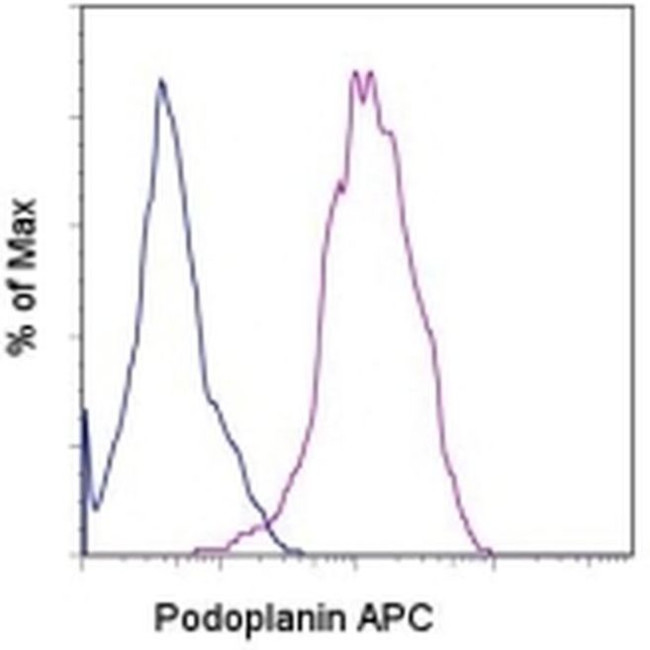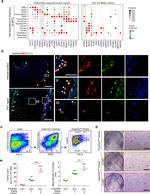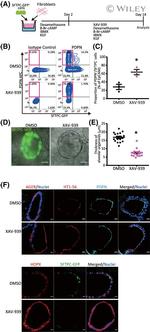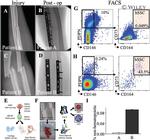Search Thermo Fisher Scientific
Invitrogen
Podoplanin Monoclonal Antibody (NZ-1.3), APC, eBioscience™
Product Details
17-9381-42
Species Reactivity
Published species
Host/Isotype
Recommended Isotype Control
Class
Type
Clone
Conjugate
Excitation/Emission Max
Form
Concentration
Purification
Storage buffer
Contains
Storage conditions
Shipping conditions
RRID
Product Specific Information
Description: Podoplanin is a 40-kDa type I transmembrane sialomucin-like glycoprotein involved in platelet aggregation and cancer metastasis. This protein is expressed on lymphatic endothelial cells and follicular dendritic cells, as well as on many human cancers, including squamous cell carcinoma, glioblastoma, seminoma, and mesothelioma. Podoplanin expression has been demonstrated to be regulated by the Fos protein of the Activating Protein-1 (AP-1) transcription factor complex. Much of its functionality arises via interaction with its endogenous receptor, C-type lectin-like receptor-2 (CLEC-2).
This antibody has been reported to block the interaction between Podoplanin and CLEC-2.
Applications Reported: This NZ-1.3 antibody has been reported for use in flow cytometric analysis.
Applications Tested: This NZ-1.3 antibody has been pre-titrated and tested by flow cytometric analysis of U87 cell line. This can be used at 5 µL (0.125 µg) per test. A test is defined as the amount (µg) of antibody that will stain a cell sample in a final volume of 100 µL. Cell number should be determined empirically but can range from 10^5 to 10^8 cells/test.
Excitation: 633-647 nm; Emission: 660 nm; Laser: Red Laser.
Filtration: 0.2 µm post-manufacturing filtered.
Target Information
Podoplanin (PDPN, T1A, gp38, Aggrus) is a mucin type-1 glycoprotein with a 40-43 kDa molecular weight. Podoplanin is expressed in many tumors and normal cells, especially lymphatic epithelial cells and follicular DCs. Podoplanin localizes in stromal cells of peripheral lymphoid tissue and thymic epithelial cells. As a regulator of the lymphatic endothelium, podoplanin probably plays a role in maintaining the unique shape of podocytes. Podoplanin appears to serve as a ligand for CLEC-2 and expression is positively correlated with tumors expressing greater invasive and metastatic potential. Podoplanin is directly involved in cell migration, aids metastases formation and tumor cell invasion of tissue. Further, it has also been determined that podoplanin expression is induced through Src activation of Cas and, recently, there are indications of podoplanin presence on Th17 cells. Initial studies below indicate the presence of podoplanin on a small but distinct population of CD4+ cells from human PBMC. Dysfunction of the podoplanin protein has been linked to diseases such as lymphangioma and subglottis neoplasm. Podoplanin has also been proposed as a marker for lung injury due to the physiological function of the protein.
For Research Use Only. Not for use in diagnostic procedures. Not for resale without express authorization.
How to use the Panel Builder
Watch the video to learn how to use the Invitrogen Flow Cytometry Panel Builder to build your next flow cytometry panel in 5 easy steps.
Bioinformatics
Protein Aliases: Aggrus; CTA-520D8.1; Glycoprotein 36; glycoprotein, 36-KD; Gp36; hT1alpha-1; hT1alpha-2; lung type I cell membrane associated glycoprotein; lung type-I cell membrane-associated glycoprotein (T1A-2); OTTHUMP00000009640; OTTHUMP00000044504; PA2.26 antigen; PDPN; Podoplanin; RP23-348F1.2; T1-alpha; T1A
Gene Aliases: AGGRUS; GP36; Gp38; GP40; HT1A-1; OTS8; PA2.26; PDPN; PSEC0003; PSEC0025; T1A; T1A-2; T1A2; TI1A
UniProt ID: (Human) Q86YL7
Entrez Gene ID: (Human) 10630

Performance Guarantee
If an Invitrogen™ antibody doesn't perform as described on our website or datasheet,we'll replace the product at no cost to you, or provide you with a credit for a future purchase.*
Learn more
We're here to help
Get expert recommendations for common problems or connect directly with an on staff expert for technical assistance related to applications, equipment and general product use.
Contact tech support









